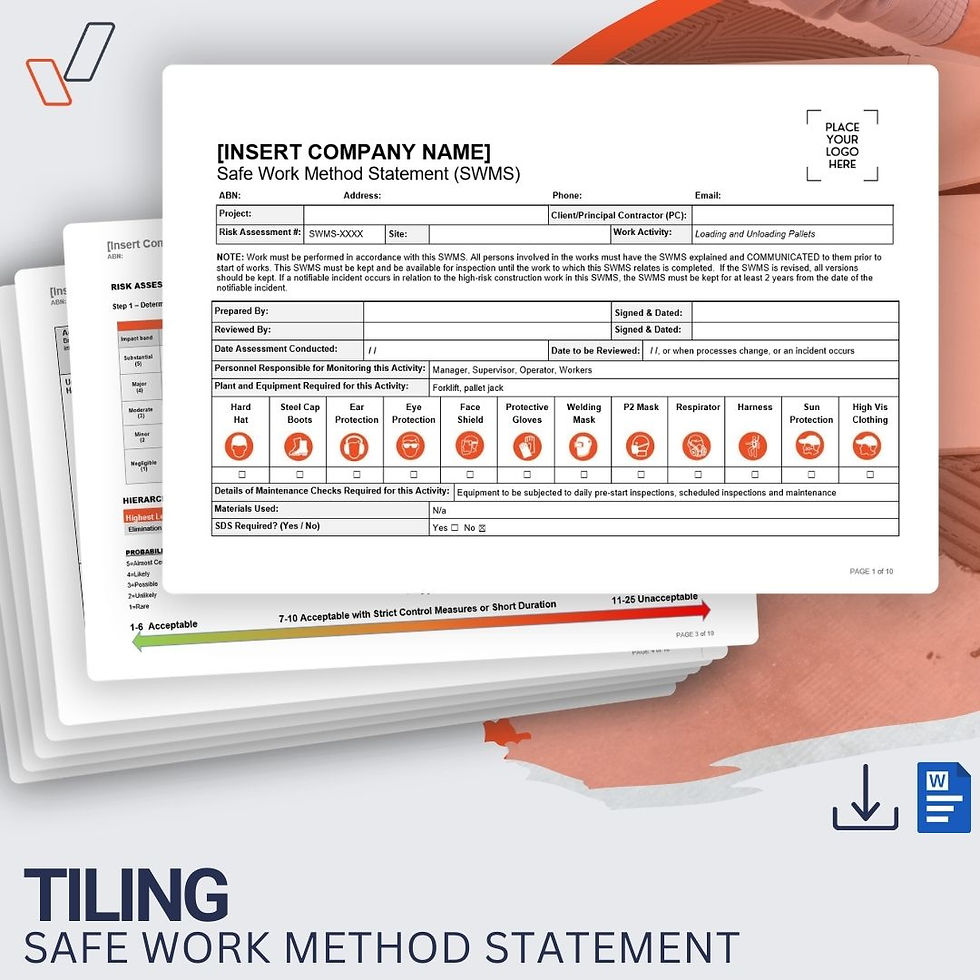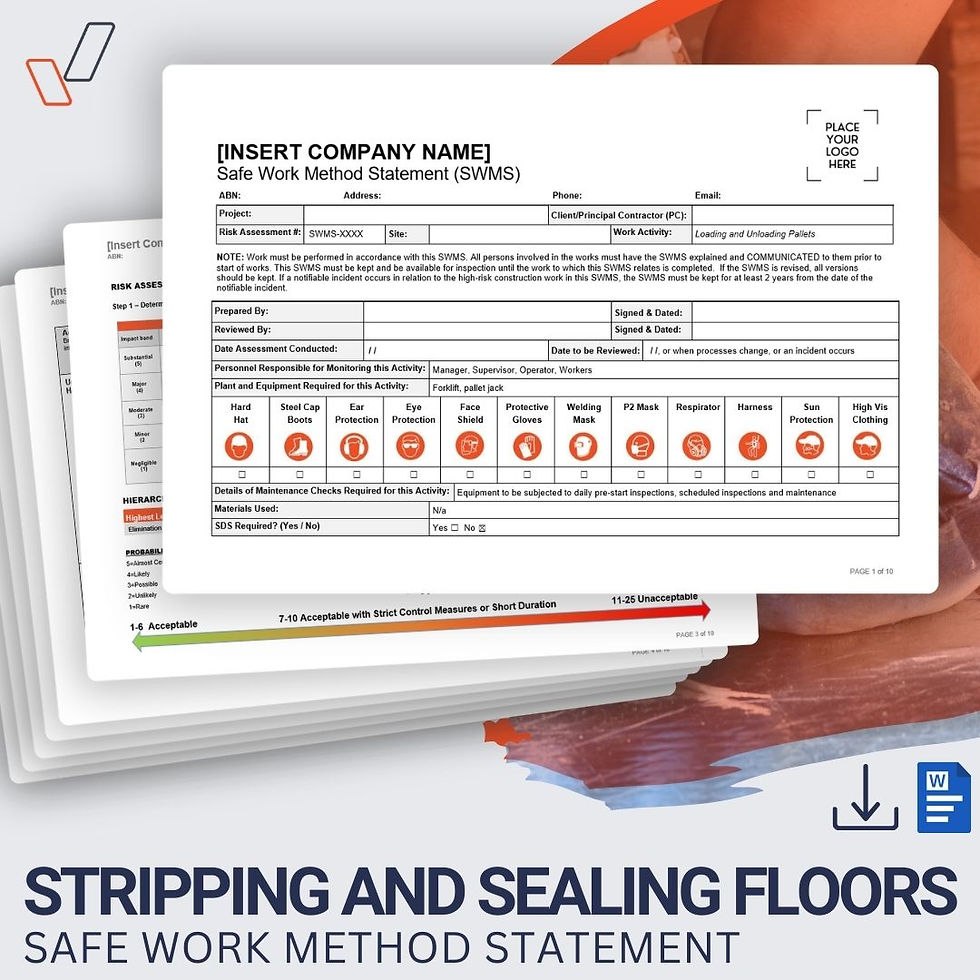This 12-page Rigging and Chain Blocks Safe Work Method Statement (SWMS) provides the typical safety controls and possible hazards associated with performing rigging activities and using chain blocks in the workplace.
Pre-filled and ready to use, this comprehensive document is designed by WHS experts to help your business meet safety obligations and maintain compliance with Australian WHS legislation. It covers all key aspects of risk management, safe work procedures, and regulatory responsibilities involved in rigging operations.
Suitable for use across all Australian states and territories, this SWMS is fully editable in Microsoft Word format so you can easily customise it with your company name, logo, and site-specific details.
NOTE: If you're performing technical rigging using chain blocks, chain motors, or raising/lowering trusses (i.e. event setups, staging, or industrial installations) - this is the SWMS for you. For broader construction rigging (formwork, precast, general materials), please see our Rigging SWMS instead.
Who This SWMS Is For
This SWMS is ideal for:
Rigging and dogman contractors
Construction companies
Event staging and production crews
Maintenance and plant operations teams
Civil and infrastructure projects
Engineering and mechanical installation providers
Any business involved in lifting, hoisting, or suspended load operations
What This SWMS Covers
Pre-start checks and inspections of slings, chains, and lifting equipment
Step-by-step rigging operations using chain blocks and chain motors
Identifying and managing hazards such as falling objects, crushing, electrical contact, and equipment malfunction
Secure site setup, barricading, and exclusion zones
Ensuring overhead and underground service detection and clearances
Use of PPE including hard hats, gloves, high-vis clothing, harnesses, and respiratory protection
Communication protocols using radios, hand/whistle signals
Prohibition of mobile phone use during critical rigging operations
Emergency response procedures including incident reporting and evacuation
Clear roles and responsibilities for workers, supervisors, and riggers
Controls for lifting loose items and non-rated containers
Safe raising and lowering of trusses via chain blocks
Environmental change management and dynamic risk reassessment
Worker qualifications and training requirements
What’s Included in Your Template
Comprehensive risk assessment matrix and hierarchy of controls
Step-by-step job procedures with pre- and post-control risk ratings
PPE requirements checklist
List of required tools, plant, and equipment
Sign-off section for all personnel involved
HRCW (High Risk Construction Work) checklist
Editable fields for company and site-specific details
Reference to relevant legislation, codes of practice, and standards
Site-specific hazards section
Emergency procedures and contact instructions
This SWMS template for Rigging and Chain Blocks is an invaluable tool for quickly and effectively documenting your WHS systems. Designed for swift editing and customisation, it adapts easily to your operational needs - making it an essential part of your safety management toolkit.
Perfect for tenders, safety audits, and day-to-day operations, this template saves you time and effort while helping your business stay safe and compliant.
Get your Rigging and Chain Blocks SWMS today and start using it instantly!
Rigging and Chain Blocks SWMS
We accept the following payment methods:
➡️ Pre-filled and ready to use
➡️ Created by WHS experts, aligned with Australian WHS legislation
➡️ Suitable for all Australian states and territories
➡️ Instant delivery via email.
➡️ Fully Editable (Microsoft Word Format).
➡️ Quickly add your logo and business details.
➡️ Easy customisation instructions included.
➡️ Pay once, use it as many times as you need.
➡️ 12 months free email & phone support.


















